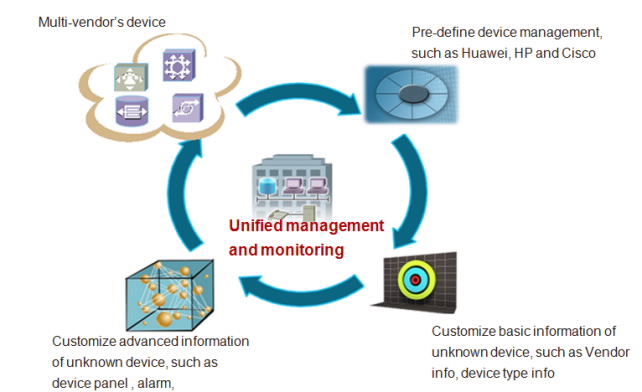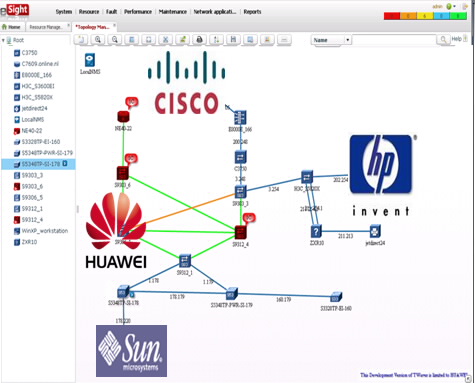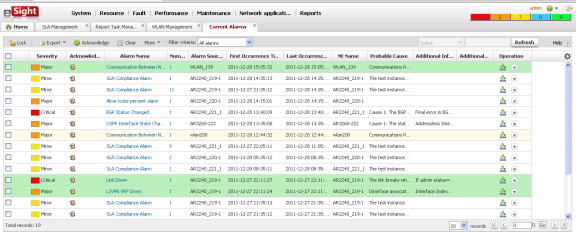The solution provides an open management platform that allows users to manage and monitor devices from multiple vendors by unifying topology, alarm, and performance operations.
Users can automatically discover devices by following a simple process and manage devices through predefined device parameters. In addition, users can define the management capabilities of devices to monitor these devices' performance and quality indicators. The following figure shows the multi-vendor device management process of the solution.

Comprehensive Device Monitoring
The eSight system provides multiple resource discovery methods. These methods include specifying an IP address or address segment and importing a template (an Excel file containing all device information). After discovering devices from multiple vendors, users can monitor all the devices in eSight's O&M topology window.

eSight has preset capabilities to manage devices from multiple vendors, including Cisco, HP, and Sun. Through eSight, users can manage these devices' alarms, performance, and simple configuration, as well as the network topology that connects the devices. If users need to more thoroughly manage these devices or other devices, users can customize device management functions.

Apart from monitoring the entire network, eSight makes it easy to thoroughly monitor devices from different vendors. The monitored items include Top N alarms, device availability statistics, and performance variables such as device temperature, interface error packet rate, and CPU usage.

Multiple Fault Locating Methods to Dramatically Improve O&M Efficiency
eSight keeps users informed of device status with multiple types of alarm notification methods, such as alarm indicator, alarm box, and email. In addition, eSight consolidates alarms of the same type, supports the blinking of alarm indicators, provides detailed analysis of alarm causes, and offers follow-up suggestions. These features help users quickly locate fault causes and rectify the faults.

As shown in the following figure, eSight can navigate to the topology link corresponding to an alarm, making it easy to locate faults rapidly.

Furthermore, eSight can navigate to the device panel corresponding to an alarm. By following the prompt on the panel, users can easily locate the fault.

Service-Based Measurement System to Give a Clear Picture of Network Quality
eSight defines more than 20 types of service level agreements (SLAs) for various services and provides a comprehensive evaluation score. These services include voice, video, data, web page browsing, and FTP applications. Users can easily understand the current network quality and perform maintenance and management in a timely manner.

The unified multi-vendor O&M solution provides the following benefits to users:
- Dramatically improves O&M efficiency by enabling management of all the devices on the network and providing multiple fault-locating and quality-monitoring methods.
- Improves network setup efficiency with highly-efficient resource discovery methods.
- Simplifies in-depth customization of third-party devices for easy management.
- Provides a clear picture of network quality using a service-based quality measurement system.


























